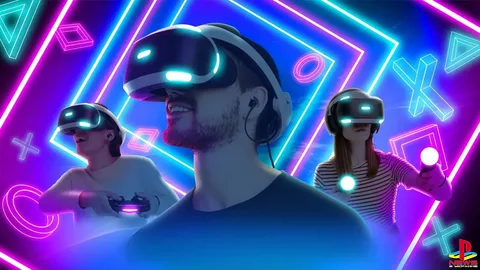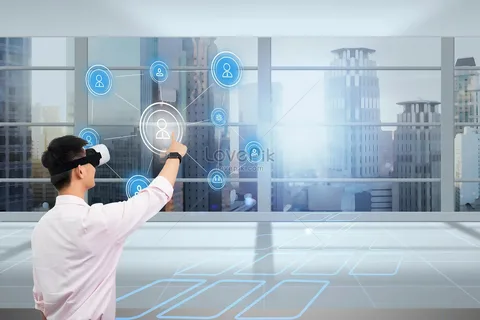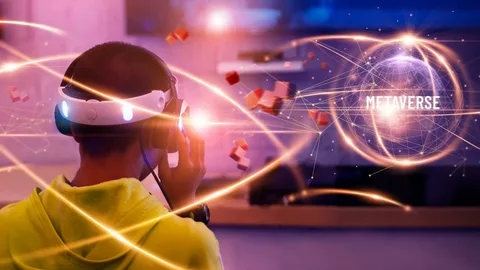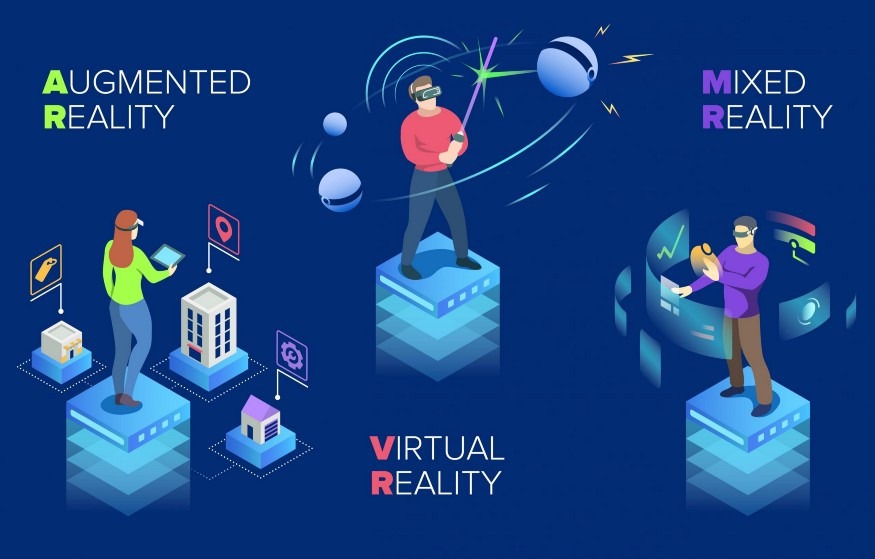As the years turns the advancement in technology also turns to new level and get sophisticated yet effective. Due to the unavailability of time technology modes are shifting to virtual space. 2024 VR Vs AR and Metaverse are becoming widely recognized and people are taking their services into action to achieve their goals.
Virtual technologies are highly transforming healthcare, education, entertainment, and gaming sectors at large scales.
In this detailed blog, you will explore;
- Key differences between VR Vs AR, MR, and Metaverse
- Their unique features,
- Applications,
- Common Games
- And how they shape our lives.
Let’s dive into the technology.
Virtual Reality – VR
Virtual Reality creates a fully immersive digital world where users can experience environments, scenarios, and activities that feel real.
By wearing a VR headset, you are transported into a completely new world, whether it’s for gaming, training, or socializing.

Key Features of VR:
Immersive 3D Environments
VR places users in a 3D world that feels lifelike.
Motion Tracking
Sensors track head and body movements to provide a 360-degree experience.
Haptic Feedback
VR controllers provide feedback, allowing users to feel interactions in the virtual world.
Audio Immersion
Spatial audio gives users the perception of sound coming from specific directions.
Hand Gestures
Users can interact with virtual objects using hand gestures.
Physical Detachment
VR entirely blocks the real world, immersing users in a virtual experience.
How VR Changes Our Lives:
- VR creates immersive learning environments, such as virtual labs and historical simulations, offering hands-on learning.
- Surgeons use VR to simulate surgeries, improving their skills in risk-free environments.
- VR is being used in therapy to treat PTSD, anxiety, and phobias.
- VR games and movies provide a more engaging, lifelike experience.
- Virtual social spaces like VRChat enable people to meet, socialize, and collaborate without physical proximity.
- VR is used for realistic job training, reducing risks in dangerous environments.
- Fitness-based VR games turn workouts into fun, immersive experiences.
Popular VR Games:
Popular VR Games
-
Beat Saber
- Slash blocks to music in this rhythm game.
- Features dynamic soundtracks and levels.
-
Half-Life: Alyx
- First-person VR shooter with immersive storytelling.
- Known for its gripping visuals and action.
-
Saints & Sinners
- Survival horror set in The Walking Dead.
- Offers intense combat and decisions.
-
No Man’s Sky VR
- Explore endless planets in this space game.
- Features interstellar travel and alien discovery.
-
Superhot VR
- Time moves when you do in this shooter.
- Focuses on strategic, slow-motion combat.
Augmented Reality – AR
Augmented Reality improves the real world by adding digital elements to the physical environment.
Unlike VR, which creates a fully virtual world, AR overlays information, graphics, or animations onto the real-world view, accessible through smartphones, tablets, or AR glasses.

Key Features of AR:
Real-World Integration
AR enhances your actual environment with digital overlays.
Accessibility
Most AR experiences are accessible through smartphones and tablets.
Marker-Based AR
Uses visual markers (like QR codes) to trigger digital content.
Projection-Based AR
Uses projection technologies to create interactive displays on physical surfaces.
Location-Based AR
Digital elements are tied to specific geographic locations (e.g., Pokémon Go).
Interactive Elements
Users can interact with digital overlays, such as tapping, swiping, or manipulating objects.
How AR Changes Our Lives:
- AR apps let consumers visualize products in their homes before purchasing, improving decision-making.
- AR-based navigation apps offer real-time directions and visual cues.
- AR brings textbooks to life with interactive 3D models, making learning more engaging.
- Brands use AR to create interactive advertisements that captivate users.
- AR assists surgeons by overlaying vital information onto the patient during operations.
- AR brings digital games into real-world environments, blending physical and digital experiences.
- AR is used in industrial settings for safety instructions, training, and remote support.
Popular AR Games:
-
Pokémon Go
Players catch Pokémon in real-world locations using their smartphones.
-
Ingress
A location-based AR game where players control virtual portals around real-world landmarks.
-
Harry Potter: Wizards Unite
It is a now-defunct AR game that lets users cast spells in the real world.
-
Jurassic World Alive
Capture dinosaurs roaming your neighborhood in this AR experience.
-
The Walking Dead: Our World
An AR game where players fight off zombies in their real-world surroundings.
Mixed Reality – MR
Mixed Reality combines the elements of VR and AR, allowing users to interact with both real-world and digital objects.
MR blurs the lines between reality and digital interaction, enabling a seamless experience where both virtual and physical elements coexist and respond to each other in real-time.

Key Features of MR:
-
Blended Environments
MR integrates real-world and digital objects in one view.
-
Spatial Mapping
MR devices map the physical environment to anchor digital content accurately.
-
Object Recognition
MR recognizes and interacts with real-world objects, merging them with digital elements.
-
Gesture Control
Users can manipulate virtual objects using hand gestures.
-
Real-World Awareness
Unlike VR, users are aware of their real-world surroundings while interacting with virtual elements.
-
Advanced Hardware Requirements
MR requires devices like Microsoft HoloLens or Magic Leap to deliver the experience.
How MR Changes Our Lives:
- Architects and designers use MR to visualize 3D models in natural environments, making collaboration easier.
- Teams can collaborate on complex projects in real time, manipulating 3D objects from different locations.
- Surgeons use MR to visualize human anatomy in detail, improving surgical precision.
- MR helps train employees by merging fundamental tools with virtual simulations.
- MR allows for interactive narratives where users can influence the storyline in real time.
- MR offers more interactive learning experiences, enabling students to interact with both natural and digital resources.
- MR brings gaming experiences to life by simultaneously allowing players to interact with their physical environment and virtual elements.
Popular MR Games:
-
Minecraft Earth (defunct)
Allowed players to build and interact with structures in the real world using MR.
-
Ghostbusters: Afterlife ScARe
An MR experience where players hunt ghosts in real-world locations.
-
Fragments
An MR crime-solving game where clues are hidden in your physical environment.
-
RoboRaid
A first-person shooter where alien robots invade your living room.
-
HoloTour
An MR travel experience that allows users to explore historical cities and famous landmarks.
Understanding the Metaverse
The Metaverse is a vast, interconnected digital universe where VR, AR, and MR all come together.
In the Metaverse, users can interact with 3D environments, socialize with others, and engage in activities like shopping, gaming, and working.
The Metaverse represents the future of the internet, combining elements of virtual worlds, social media, and digital economies.

Key Features of the Metaverse:
Shared Virtual Space
The Metaverse allows users to interact in a persistent, shared digital environment.
Avatars and Digital Identities
Users create avatars to represent themselves in the Metaverse.
Virtual Economies
The Metaverse includes digital currencies, NFTs, and virtual real estate for commerce.
Interoperability
The Metaverse connects different platforms, allowing seamless transitions between virtual worlds.
Real-Time Interaction
Users can interact with others in real time, making it a dynamic social space.
Cross-Platform Access
Users can enter the Metaverse via VR, AR, MR, or traditional devices like computers and smartphones.
How the Metaverse Changes Our Lives:
- Metaverse offers new ways to connect with people globally, such as
- Attending virtual events
- Gatherings
- Educational classes
- Users can buy and sell NFTs and virtual land.
- The Metaverse provides an interconnected space.
- Companies can set up virtual offices.
- Additionally, it offers new ways for employees to collaborate.
- Users can attend
- Virtual concerts
- Watch movies
- Or participate in interactive storytelling
- Artists, developers, and creators can build virtual worlds, games, and experiences in the Metaverse.
- Retailers set up virtual stores where users can shop for both worlds.
Popular Games in the Metaverse:
-
Fortnite
A battle royale game with social experiences like concerts and virtual events.
-
Roblox
A platform where users create their own games and experiences, engaging with others.
-
Decentraland
A virtual world built on blockchain technology where users can buy virtual land.
-
The Sandbox
A blockchain-based virtual world where users can buy, create, and sell digital assets.
-
VRChat
A virtual world where users interact with others using customized avatars in social settings.
Detailed Comparison: VR Vs AR Vs MR

| Feature | Virtual Reality (VR) | Augmented Reality (AR) | Mixed Reality (MR) |
| Immersion Level | Full immersion in a digital environment | Adds digital elements to the real world | Combines real and virtual elements in a seamless experience |
| Hardware | VR headsets (Oculus, HTC Vive, PlayStation VR) | Smartphones, tablets, AR glasses | MR headsets (HoloLens, Magic Leap) |
| User’s Environment | Completely virtual, users are cut off from the real world | Real world with digital overlays | Blends real-world with virtual objects |
| Interactivity | Full interaction with a virtual world | Limited to interacting with virtual overlays in real life | Users interact with both virtual and real-world elements |
| Cost | Expensive due to specialized hardware | Affordable (often requires only a smartphone) | Expensive, as it requires advanced headsets |
| Primary Use Cases | Gaming, training simulations, virtual social spaces | Navigation, shopping, gaming, education | Professional design, education, healthcare, entertainment |
| Famous Games | Beat Saber, Half-Life: Alyx, No Man’s Sky | Pokémon Go, Ingress, Harry Potter: Wizards Unite | Minecraft Earth (defunct), Ghostbusters: Afterlife ScARe |
The Future of Virtual Reality – Evolving Technologies
Our website provides the latest VR vs AR, MR, and Metaverse news and insights on virtual reality technology. We keep you updated on the newest trends, from gaming advancements to hardware innovations.
Stay vigilant with our in-depth articles, and learn about the future of immersive VR experiences, whether for entertainment, education, healthcare, or professional training.
Stay connected to learn more about the advancements shaping virtual reality’s future and beyond.
FAQ
What is the difference between VR and AR?
VR immerses you in a completely digital world, while AR enhances the real world with digital overlays.
How does Mixed Reality differ from AR and VR?
MR combines real and virtual components so that users can engage with both simultaneously, while in AR and VR, the experience is different. Digital components are overlaid, or one is fully placed into a different digital world.
What is the Metaverse, and why is it important?
The Metaverse is the integration of both VR, AR, and MR into shared community spaces.
It’s important because it provides new avenues for interaction, commerce, and entertainment, and, in effect, it is completely virtual.
Is the Metaverse the future of the Internet?
- The Metaverse represents a more immersive, interactive digital space.
- Social media, gaming, and digital commerce.
- New ways to work, collaborate, and socialize in virtual environments.
How do VR and AR benefit industries?
VR is used for surgery simulation; AR assists in real-time medical procedures.
VR provides immersive training environments; AR supports real-world guidance.
VR offers lifelike gaming experiences; AR blends the real world with digital gameplay.

